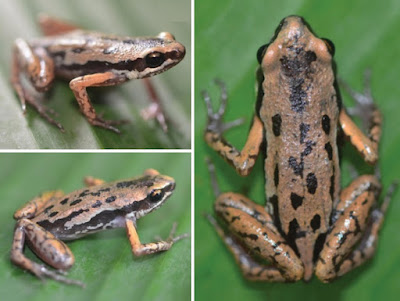 |
| Eburnocauda saxatilis Iannello & Beasley-Hall, 2024. |
Abstract
Cave crickets (Orthoptera: Rhaphidophoridae) are a globally-distributed group of insects found in cool, dark habitats of high relative humidity. In Australia, eight genera are described and several are known only from cave environments, though a far greater diversity likely remains undiscovered both underground and in forest habitats. Here, we use molecular and morphological evidence to describe Eburnocauda saxatilis gen. et sp. nov. Beasley-Hall & Iannello from Britannia Creek Cave (BCC), a granite cave system found in Victorian wet sclerophyll forest. Eburnocauda saxatilis sp. nov. is sympatric with an undescribed species of Cavernotettix Richards, 1966 and males can be easily identified by their extremely elongate styli. BCC experiences periodic flooding and is accessible year-round to recreational caving groups, who often directly disturb cricket populations via accidental trampling. We consider these threats, paired with the extremely restricted known range of Eburnocauda saxatilis sp. nov., justification for this species to receive conservation listing. We discuss the phylogenetic placement of Eburnocauda gen. nov. and the conservation implications of its establishment as a new genus.
Eburnocauda Beasley-Hall & Iannello, gen.
nov.
Type species: Eburnocauda saxatilis Beasley-Hall & Iannello
sp. nov.
Diagnosis. Eburnocauda can be distinguished from other rhaphidophorids by the extremely robust and long
styli projecting from the male subgenital plate, reaching
over half the length of the cerci. Eburnocauda also bears,
on average, two ventral linear spines on either side of
the fore and mid tibiae (prolaterally and retrolaterally);
except for Parvotettix Richards, 1968 (which lacks these
spines), all other Australian genera have at least three.
Etymology. From the Latin eburno (ivory) and cauda
(tail), alluding to the tusk-like styli found on the posterior
of males. It is a feminine noun in the nominative singular case.
Eburnocauda saxatilis Beasley-Hall & Iannello sp. nov.
Diagnosis. A medium-sized cave cricket with diagnostic features as per the monotypic genus and an adult body length of 12–14 mm. Currently only known from the Highlands – Southern Fall bioregion of Victoria, Australia.
Etymology. From Latin saxatilis, meaning that which lives amongst rocks. It is a feminine adjective in the nominative singular case
S. Iannello and P. G. Beasley-Hall. 2024. Systematics and Biology of Eburnocauda gen. nov., A Cave Cricket from Australian Granite Pseudokarst (Orthoptera: Rhaphidophoridae). Taxonomy Australia. 73: 1–9. DOI: doi.org/10.54102/ajt.pm9ob www.taxonomyaustralia.org.au/ajt/papers/pijuu7mqmi
x.com/PBeasleyHall/status/1851026221058179155



































_2024-Hinckley_Maldonado_.jpg)
_2024-Hinckley_Maldonado_.jpg)
_2024-Hinckley_Maldonado_.jpg)
_2024-Hinckley_Maldonado_.jpg)
_2024-Hinckley_Maldonado_.jpg)